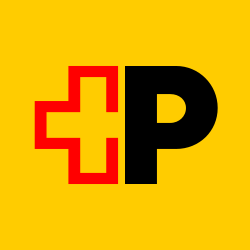Einführung in die 3D-Drucktechnologie in der Medizin
Die 3D-Drucktechnologie ist in vielen Bereichen von großem Nutzen und hat das Potenzial, die Welt, wie wir sie kennen, zu verändern. Eine Branche, in der diese Technologie besonders wertvoll sein kann, ist die Medizin. Die 3D-Drucktechnologie ermöglicht es uns, präzise und maßgeschneiderte medizinische Geräte und Implantate herzustellen, die den Bedürfnissen des einzelnen Patienten entsprechen. Die 3D-Drucktechnologie bietet auch die Möglichkeit, menschliches Gewebe und Organe zu drucken, die für Transplantationen verwendet werden können.
Vorteile von 3D-Druck in der Medizin
In der Medizin gibt es viele Vorteile von 3D-Drucktechnologie. Einer der größten Vorteile ist die Fähigkeit, maßgeschneiderte medizinische Geräte und Implantate herzustellen, die den Bedürfnissen des einzelnen Patienten entsprechen. Da jeder Patient einzigartig ist, können 3D-gedruckte Implantate und Geräte eine viel bessere Passform bieten als herkömmliche, von der Stange gefertigte Implantate und Geräte.
Ein weiterer Vorteil von 3D-Drucktechnologie in der Medizin ist, dass sie die Möglichkeit bietet, menschliches Gewebe und Organe zu drucken, die für Transplantationen verwendet werden können. Dies könnte die Wartezeit für Organspender verkürzen und die Anzahl der Todesfälle aufgrund von fehlenden Organen reduzieren.
Statistiken zur 3D-Drucktechnologie in der Medizin
Die 3D-Drucktechnologie wird immer häufiger in der Medizin verwendet. Laut einer Studie von Allied Market Research wird der globale 3D-Druckmarkt für medizinische Anwendungen bis 2027 voraussichtlich 2,3 Milliarden US-Dollar erreichen. Ein weiterer Bericht von SmarTech Analysis besagt, dass der globale Markt für 3D-gedruckte medizinische Geräte und Implantate bis 2028 voraussichtlich 6,2 Milliarden US-Dollar erreichen wird.
Arten von 3D-Druckern in der Medizin
Es gibt verschiedene Arten von 3D-Druckern, die in der Medizin verwendet werden. Einige der gebräuchlichsten sind Stereolithographie (SLA), Fused Deposition Modeling (FDM) und Selective Laser Sintering (SLS). Jeder dieser Drucker hat seine eigenen Vor- und Nachteile und wird für verschiedene Anwendungen verwendet.
Der Prozess des 3D-Drucks in der Medizin
Der Prozess des 3D-Drucks in der Medizin beginnt mit der Erstellung eines 3D-Modells des zu druckenden Objekts. Dieses Modell kann durch eine Computertomographie (CT) oder Magnetresonanztomographie (MRT) des Patienten erstellt werden. Das Modell wird dann in eine 3D-Drucksoftware geladen, die das Modell in Schichten zerlegt und Anweisungen an den 3D-Drucker gibt, wie das Objekt gedruckt werden soll.
Beispiele für 3D-gedruckte medizinische Geräte und Implantate
Es gibt viele Beispiele für 3D-gedruckte medizinische Geräte und Implantate. Ein Beispiel ist ein 3D-gedrucktes Knieimplantat, das speziell für den Patienten angepasst wurde. Ein weiteres Beispiel ist eine 3D-gedruckte Prothese für eine Hand oder einen Arm. Diese Prothesen können sehr detailliert und funktional sein und dem Patienten ein besseres Leben ermöglichen.
3D-Druck von Organen und Gewebe
Eine der aufregendsten Anwendungen von 3D-Drucktechnologie in der Medizin ist die Fähigkeit, menschliches Gewebe und Organe zu drucken. Dies könnte die Wartezeit für Organspender verkürzen und die Anzahl der Todesfälle aufgrund von fehlenden Organen reduzieren. Forscher arbeiten daran, menschliche Nieren, Leber und sogar Herzen zu drucken.
Wie man medizinische Geräte und Organe 3D-drucken kann
Es gibt verschiedene Möglichkeiten, medizinische Geräte und Organe zu drucken. Die wichtigsten Schritte sind die Erstellung eines 3D-Modells, die Vorbereitung des Modells für den Druck und der Druckprozess selbst. Es ist wichtig, dass medizinische Fachkräfte und Forscher, die daran arbeiten, medizinische Geräte und Organe zu drucken, über fundierte Kenntnisse in der 3D-Drucktechnologie verfügen.
Die Zukunft des 3D-Drucks in der Medizin
Die Zukunft des 3D-Drucks in der Medizin ist sehr aufregend. Es wird erwartet, dass die Technologie weiterhin wachsen und sich verbessern wird. Es gibt bereits Forscher, die daran arbeiten, menschliche Organe und Gewebe zu drucken, die für Transplantationen verwendet werden können. Es wird erwartet, dass der 3D-Druck in der Medizin in den kommenden Jahren immer häufiger verwendet wird.
Fazit
Die 3D-Drucktechnologie hat das Potenzial, die medizinische Industrie zu revolutionieren. Es bietet die Möglichkeit, präzise und maßgeschneiderte medizinische Geräte und Implantate sowie menschliches Gewebe und Organe zu drucken. Die Technologie wird bereits in der Medizin eingesetzt und wird voraussichtlich in den kommenden Jahren immer häufiger verwendet werden. Es ist wichtig, dass medizinische Fachkräfte und Forscher über fundierte Kenntnisse in der 3D-Drucktechnologie verfügen, um sicherzustellen, dass die gedruckten Objekte sicher und effektiv sind.


